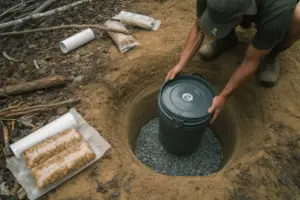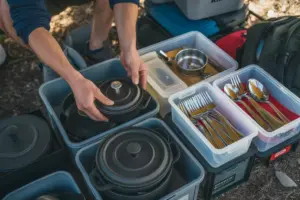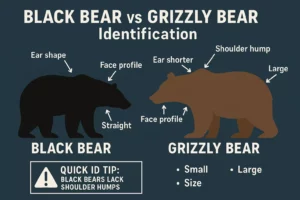How to Be an Ethical Camper: Practicing Leave No Trace Principles
Picture this: You arrive at a pristine campsite nestled beside a crystal-clear mountain lake, only to find scattered trash, charred rocks from illegal fire rings, and toilet paper blooming like white flowers among the trees. This heartbreaking scene plays out thousands of times across our wilderness areas each year, but it doesn’t have to be this way. Ethical camping through Leave No Trace principles transforms outdoor enthusiasts from environmental burdens into wilderness stewards, ensuring that the natural spaces we love remain beautiful and wild for generations to come.
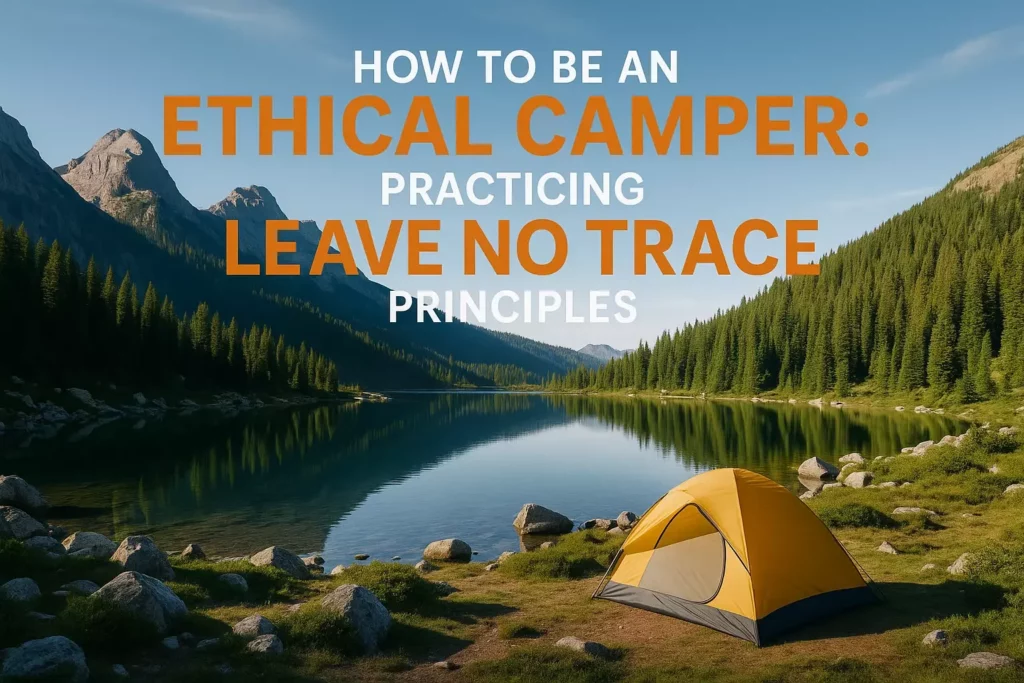
The Leave No Trace movement has revolutionized outdoor recreation by providing a clear framework for responsible wilderness use. These principles aren’t just suggestions—they’re essential practices that preserve ecosystem integrity, protect wildlife habitats, and maintain the pristine beauty that draws millions of people to nature each year.
Key Takeaways
- Leave No Trace consists of seven core principles that guide ethical outdoor behavior, from planning ahead to leaving what you find
- Proper waste disposal and campfire management are critical skills that prevent long-lasting environmental damage
- Wildlife protection requires maintaining distance and securing food to preserve natural behaviors and prevent dangerous encounters
- Trail etiquette and minimal impact camping help preserve fragile ecosystems and ensure positive experiences for all outdoor enthusiasts
- Teaching these principles to others multiplies your positive impact and builds a community of responsible outdoor recreationists
Understanding the Leave No Trace Movement
The Leave No Trace Center for Outdoor Ethics emerged in the 1990s as outdoor recreation exploded in popularity and wilderness managers struggled with increasing environmental damage. What began as a simple concept—leave the outdoors as you found it—has evolved into a comprehensive educational framework that addresses every aspect of outdoor recreation.
The movement recognizes that even well-intentioned outdoor enthusiasts can cause significant environmental damage without proper knowledge and skills. A single poorly placed campfire can scar the landscape for decades, while improper waste disposal can contaminate water sources and spread disease among wildlife populations.
The Philosophy Behind Ethical Camping
Ethical camping operates on the principle that wilderness areas are shared resources that belong to everyone—including future generations. This perspective shifts the focus from personal convenience to collective responsibility, encouraging campers to consider the long-term impacts of their actions.
The philosophy emphasizes that true outdoor skills include not just survival techniques, but also the knowledge to minimize environmental impact. Master-level campers leave no evidence of their presence, moving through wilderness areas like ghosts who enjoy nature without disturbing its delicate balance.
What Are the Core Principles of Leave No Trace Camping? 🏕️
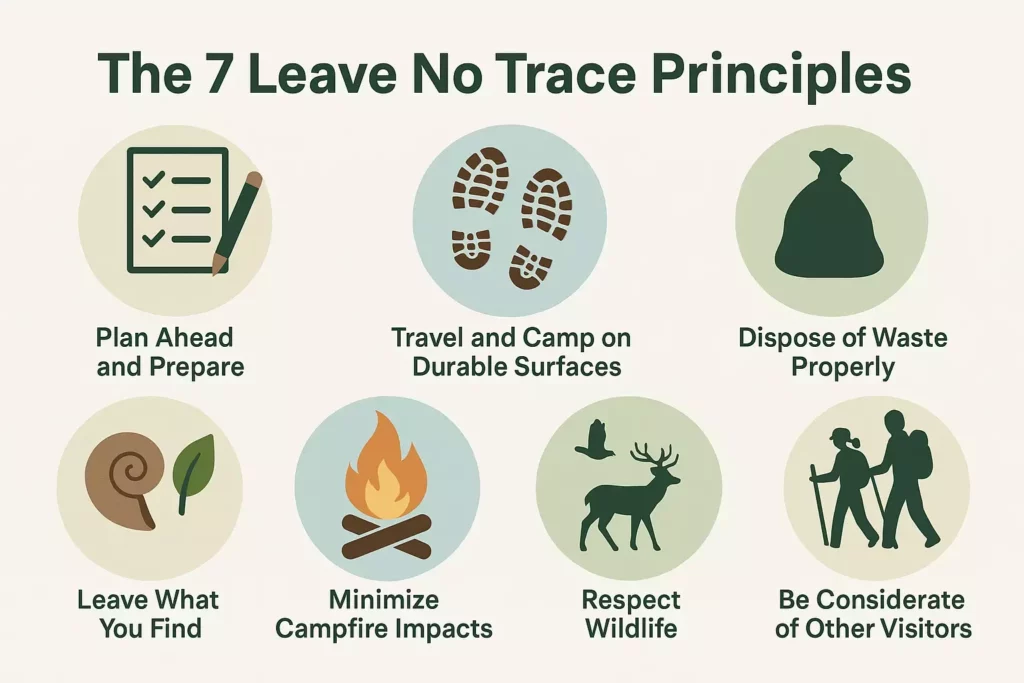
The seven Leave No Trace principles form the foundation of ethical outdoor recreation. Understanding and implementing these core principles of Leave No Trace camping transforms casual outdoor enthusiasts into responsible wilderness stewards who actively protect the environments they explore.
1. Plan Ahead and Prepare
Proper planning prevents most Leave No Trace violations before they occur. Research regulations, weather conditions, and terrain challenges to ensure you bring appropriate gear and make informed decisions about campsites, routes, and activities.
Key planning considerations include:
- Checking fire restrictions and permit requirements
- Researching fragile areas and seasonal wildlife closures
- Planning meals to minimize packaging waste
- Selecting appropriate camping gear for the environment and group size
Effective planning also means preparing for emergencies with a comprehensive first aid kit and understanding basic wilderness safety protocols.
2. Travel and Camp on Durable Surfaces
Surface durability varies dramatically across different ecosystems, and choosing appropriate travel routes and campsites prevents long-lasting environmental damage. Rock, gravel, sand, and established trails can withstand foot traffic, while fragile vegetation, wetlands, and cryptobiotic soil crusts require careful avoidance.
In high-use areas, concentrate activity on established trails and designated campsites. In pristine areas, spread out to avoid creating new trails or campsites that future visitors might follow.
Surface Selection Guidelines:
- Rocky areas: Excellent for camping and cooking
- Gravel bars: Ideal temporary campsites near water
- Established sites: Use existing impact rather than creating new damage
- Vegetation: Avoid camping on plants whenever possible
3. Dispose of Waste Properly
The “Pack it in, pack it out” principle extends beyond obvious trash to include all forms of human waste. Proper waste management prevents water contamination, reduces wildlife conflicts, and maintains the aesthetic value of wilderness areas.
Human waste disposal requires specific techniques:
- Dig catholes 6-8 inches deep and 200 feet from water sources
- Pack out toilet paper in arid environments
- Use established facilities when available
- Consider portable waste systems for sensitive areas
Greywater from cooking and washing should be strained and scattered widely, at least 200 feet from water sources. Even biodegradable soaps can harm aquatic ecosystems, so minimize their use or eliminate them entirely.
4. Leave What You Find
Natural and cultural artifacts tell the story of wilderness areas and provide educational opportunities for future visitors. Removing rocks, antlers, fossils, or historical artifacts diminishes these experiences and may violate federal laws.
This principle extends to living elements as well. Picking flowers, carving trees, or moving rocks to build cairns alters natural processes and disrupts ecosystem balance. Take only photographs and memories, leaving natural treasures for others to discover.
5. Minimize Campfire Impacts
Campfires create some of the most visible and long-lasting impacts in wilderness areas. Fire rings scar the landscape for decades, while improperly extinguished fires can cause devastating wildfires that destroy entire ecosystems.
Responsible fire practices include:
- Using established fire rings when available
- Building fires only where permitted
- Keeping fires small and using dead wood found on the ground
- Extinguishing fires completely until ashes are cold to the touch
- Scattering cold ashes widely away from camp
Consider lightweight stoves for campfire cooking as an alternative that provides reliable heat without environmental impact.
6. Respect Wildlife
Wildlife encounters rank among the most memorable aspects of outdoor adventures, but these interactions require careful management to protect both animals and humans. Feeding wildlife creates dangerous dependencies, while close approaches can trigger defensive behaviors that result in injuries.
Wildlife protection strategies:
- Store food in bear-proof containers or hang properly
- Maintain recommended distances (25 yards for most animals, 100 yards for bears and wolves)
- Never feed wildlife, even accidentally through food scraps
- Observe animals quietly without disrupting natural behaviors
Understanding wildlife behavior helps campers recognize stress signals and adjust their actions accordingly. A well-stocked survival kit should include wildlife deterrents appropriate for the region.
7. Be Considerate of Other Visitors
Wilderness experiences depend heavily on the behavior of other users, and thoughtful actions enhance everyone’s enjoyment of natural areas. Noise pollution, inappropriate behavior, and monopolizing popular areas diminish the wilderness experience for all visitors.
Consideration practices include:
- Keeping noise levels low, especially in the early morning and evening
- Yielding trail right-of-way appropriately
- Camping away from trails and other visitors when possible
- Respecting quiet hours and natural soundscapes
Advanced Leave No Trace Techniques
Beyond the basic principles, experienced campers develop sophisticated skills that further minimize environmental impact while enhancing outdoor experiences.
Invisible Camping Skills
Master-level campers practice “invisible camping”—techniques that leave absolutely no trace of human presence. These skills require extensive practice but result in minimal environmental impact even in pristine areas.
Invisible camping techniques include:
- Selecting campsites that will show no evidence after departure
- Using natural windbreaks instead of altering vegetation
- Cooking and eating without leaving food residue
- Timing activities to minimize wildlife disturbance
Weather-Specific Considerations
Different weather conditions require adapted Leave No Trace practices. Snow camping allows for more flexibility in campsite selection since snow protects underlying vegetation, while desert camping demands extreme water conservation and careful site selection to avoid fragile biological soil crusts.
Seasonal adaptations:
- Winter: Use snow for waste disposal and campsite protection
- Spring: Avoid muddy trails and nesting areas
- Summer: Focus on water conservation and fire prevention
- Fall: Minimize impact on wildlife preparing for winter
Proper weather-appropriate clothing reduces the need for shelter modifications that might impact the environment.
Teaching Leave No Trace to Others
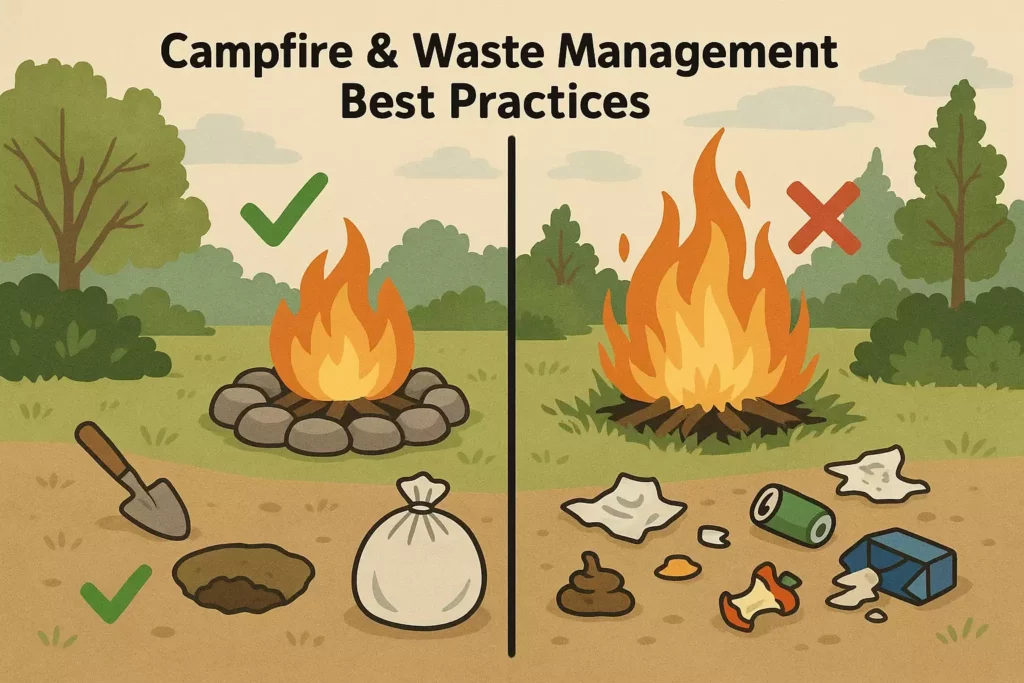
Environmental education multiplies individual impact exponentially as each person who learns Leave No Trace principles can influence dozens of others throughout their outdoor careers. Effective environmental education requires both knowledge and communication skills.
Leading by Example
Actions speak louder than words in outdoor education. Demonstrating proper techniques while explaining the reasoning behind each practice creates powerful learning experiences that stick with observers long after the trip ends.
Effective demonstration includes:
- Explaining the “why” behind each technique
- Showing both correct and incorrect methods
- Encouraging questions and discussion
- Sharing personal experiences and mistakes
Family and Youth Education
Camping with kids provides incredible opportunities to instill environmental ethics at an early age. Children who learn Leave No Trace principles as natural parts of outdoor experiences carry these values throughout their lives.
Youth education strategies:
- Making environmental protection into games and challenges
- Assigning age-appropriate responsibilities
- Celebrating successful Leave No Trace practices
- Connecting environmental protection to wildlife welfare
Family camping activities can incorporate Leave No Trace education seamlessly into fun outdoor experiences.
Common Leave No Trace Mistakes and Solutions
Even experienced campers make mistakes that can cause environmental damage. Recognizing common errors and understanding their solutions prevents repeated problems and helps educate others who might make similar mistakes.
Waste Management Errors
Improper waste disposal ranks among the most common and visible Leave No Trace violations. These mistakes often result from lack of knowledge rather than intentional disregard for environmental protection.
| Common Mistake | Environmental Impact | Proper Solution |
|---|---|---|
| Burying toilet paper | Attracts wildlife, slow decomposition | Pack out all toilet paper |
| Washing dishes in streams | Soap contamination, food waste | Wash 200 feet from water sources |
| Leaving food scraps | Wildlife habituation, ecosystem disruption | Pack out all food waste |
| Improper greywater disposal | Water contamination, vegetation damage | Strain and scatter widely |
Campfire Mistakes
Fire-related errors create some of the most long-lasting environmental damage and pose serious safety risks to both campers and surrounding ecosystems.
Critical fire safety practices:
- Never leave fires unattended
- Use only dead and downed wood
- Keep fires small and manageable
- Ensure complete extinguishment before leaving
Understanding water purification techniques provides alternatives to boiling that don’t require fires in sensitive areas.
Regional Considerations and Special Environments
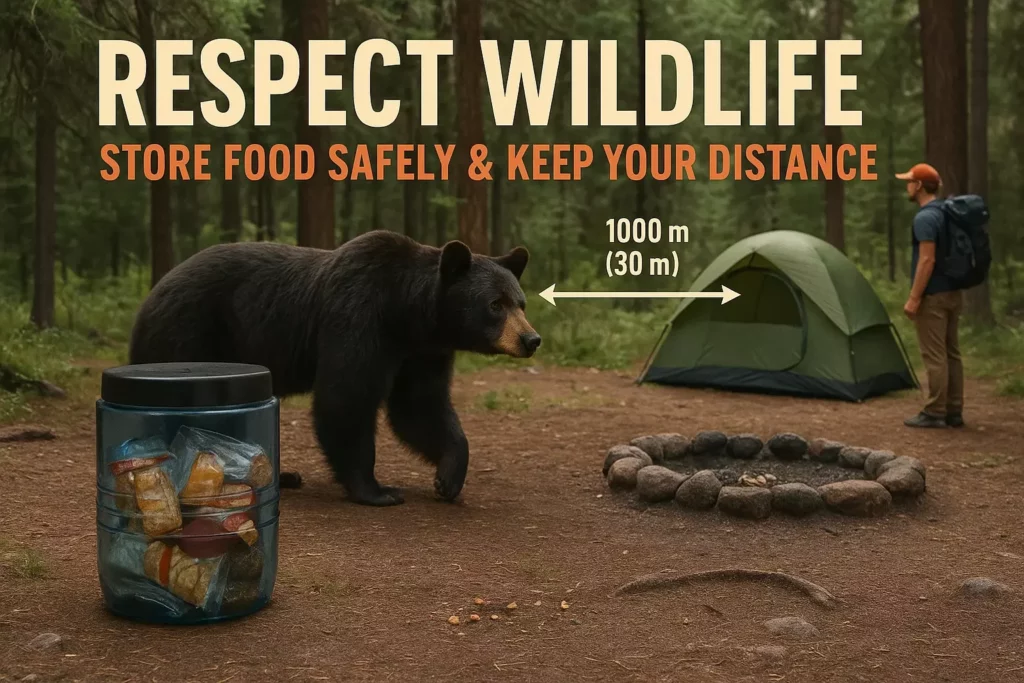
Different ecosystems require adapted Leave No Trace practices that address specific environmental challenges and sensitivities. What works in temperate forests may cause significant damage in desert or alpine environments.
Desert Camping Ethics
Desert ecosystems appear barren but support incredibly fragile biological communities that can take decades to recover from damage. Cryptobiotic soil crusts, which prevent erosion and provide nutrients for plant growth, are particularly vulnerable to foot traffic.
Desert-specific practices:
- Walk on rock or established trails whenever possible
- Avoid camping in washes that may flood
- Conserve water religiously
- Protect yourself from extreme temperatures without altering the environment
Alpine and Mountain Environments
High-altitude environments combine extreme weather with fragile ecosystems that have short growing seasons and limited recovery capacity. Alpine plants may take decades to grow just a few inches, making trampling damage particularly severe.
Mountain considerations:
- Camp below treeline when possible
- Use established sites in popular areas
- Protect vegetation from tent placement and foot traffic
- Understand weather patterns and emergency procedures
Proper backpack packing becomes critical in alpine environments where weather can change rapidly.
Aquatic Environments
Water-based camping requires special attention to pollution prevention and shoreline protection. Lakes, rivers, and coastal areas support complex ecosystems that are particularly vulnerable to contamination.
Aquatic environment practices:
- Camp well back from shorelines
- Use designated boat launches and campsites
- Prevent fuel and soap from entering water
- Respect aquatic wildlife and nesting areas
🏕️ Leave No Trace Camping Checklist
Track your ethical camping practices and ensure you’re following all seven principles
Complete all items to become a Leave No Trace champion!
Building Long-Term Environmental Stewardship
Ethical camping extends far beyond following rules during individual trips. True environmental stewardship involves developing a lifelong commitment to protecting natural areas and inspiring others to do the same.
Advocacy and Volunteer Opportunities
Active participation in conservation organizations amplifies individual impact through collective action. Many organizations offer volunteer opportunities that directly support Leave No Trace education and wilderness protection.
Stewardship opportunities include:
- Trail maintenance and restoration projects
- Educational program leadership
- Wilderness area monitoring and research
- Policy advocacy for environmental protection
Continuous Learning and Skill Development
Environmental conditions and best practices evolve constantly, requiring ongoing education to maintain effective Leave No Trace skills. Climate change, increasing visitation, and new research findings all influence optimal wilderness practices.
Skill development resources:
- Advanced wilderness skills courses
- Leave No Trace trainer certification programs
- Scientific research on environmental impact
- Regional workshops and conferences
Proper sleeping bag selection and other gear choices can reduce environmental impact while improving comfort and safety.
Conclusion
Ethical camping through Leave No Trace principles represents far more than a set of rules—it embodies a fundamental shift in how humans interact with natural environments. By understanding and implementing what are the core principles of Leave No Trace camping, outdoor enthusiasts transform from environmental consumers into active protectors of the wilderness areas they love.
The seven principles provide a comprehensive framework that addresses every aspect of outdoor recreation, from initial planning through post-trip cleanup. These practices ensure that pristine wilderness areas remain available for future generations while protecting the complex ecosystems that make these areas so valuable.
Start implementing these principles on your next outdoor adventure, and commit to sharing your knowledge with fellow campers. Every person who adopts Leave No Trace practices creates a ripple effect that protects countless acres of wilderness and inspires others to become environmental stewards.
The wilderness is calling—answer responsibly, and help preserve these incredible natural treasures for generations of outdoor enthusiasts to come.




